Last updated: July 8, 2025
Article
Scientist Profile: Rachel Townsend, Wildlife Biologist
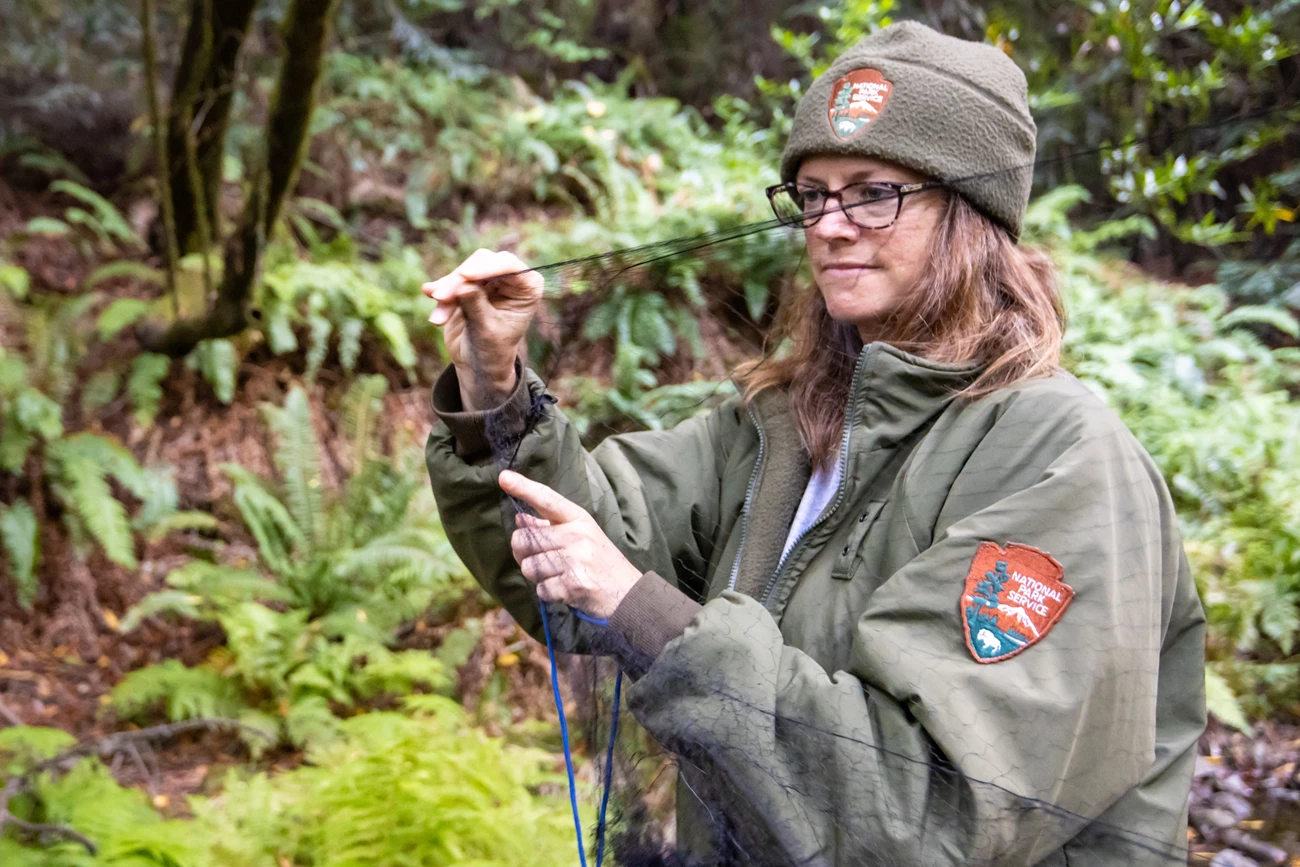
NPS / JESSICA WEINBERG MCCLOSKY
From eagles and dinosaurs to environmental science and Spanish…
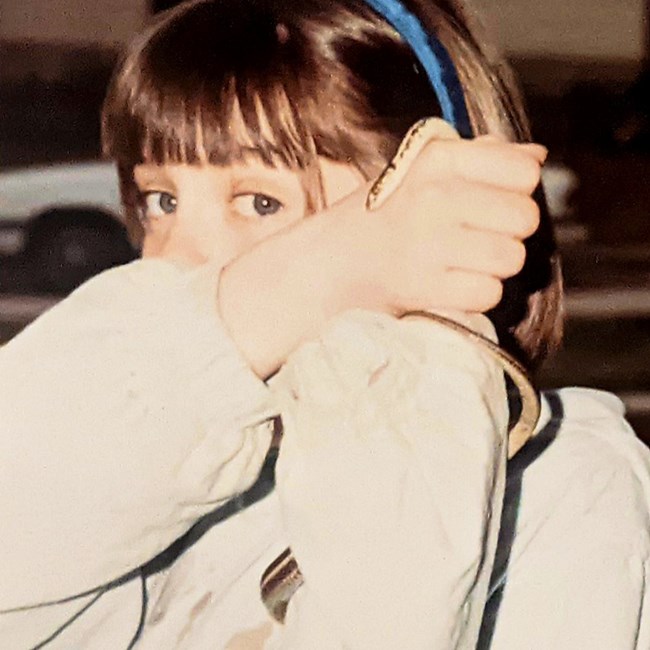
COURTESY RACHEL TOWNSEND
“I'm originally from Iowa, born and raised. I guess I’ve been out in nature since I was a little kid. My dad was a hunter and fisherman. In the winter times he would take me out along the Mississippi River, and we'd be eagle watching—watching them catch fish in the ice. And [we’d go] canoeing and were always going to science museums. I was a pretty high energy kid and so I think part of it was probably trying to get me outdoors, going crazy with me inside.
I always wanted to be a paleontologist. [Dinosaurs were] my big love for a long time. Then, hitting high school and college I felt like I could do more good focusing on animals that weren't extinct. And working to keep them from going extinct.
Most people don’t know I also have a degree in Spanish. My older sister took me to Venezuela when I was 16. That was the bug to travel and get out of my comfort zone and to connect with people in a different language. So when I went to college, I was like, ‘I can’t give it up.’ Spanish really helped me get through the science courses, which I found challenging.”
“I’m so lucky to be here”
“I feel like the really cool thing about my position is that I get to be involved in projects that are totally different. I work on San Francisco garter snakes and red-legged frogs, spotted owls, snowy plovers, Marin Wildlife Watch, bats, coyotes.
I feel really privileged to do the spotted owl monitoring. We’re in the middle of this busy urban area. And then I can go into this canyon in the middle of the woods and it's like no one’s around for a mile. Every time I'm out there and I can just sit and watch the owls 20 feet away from me doing their thing, I'm just like, ‘I'm so lucky to be here.’
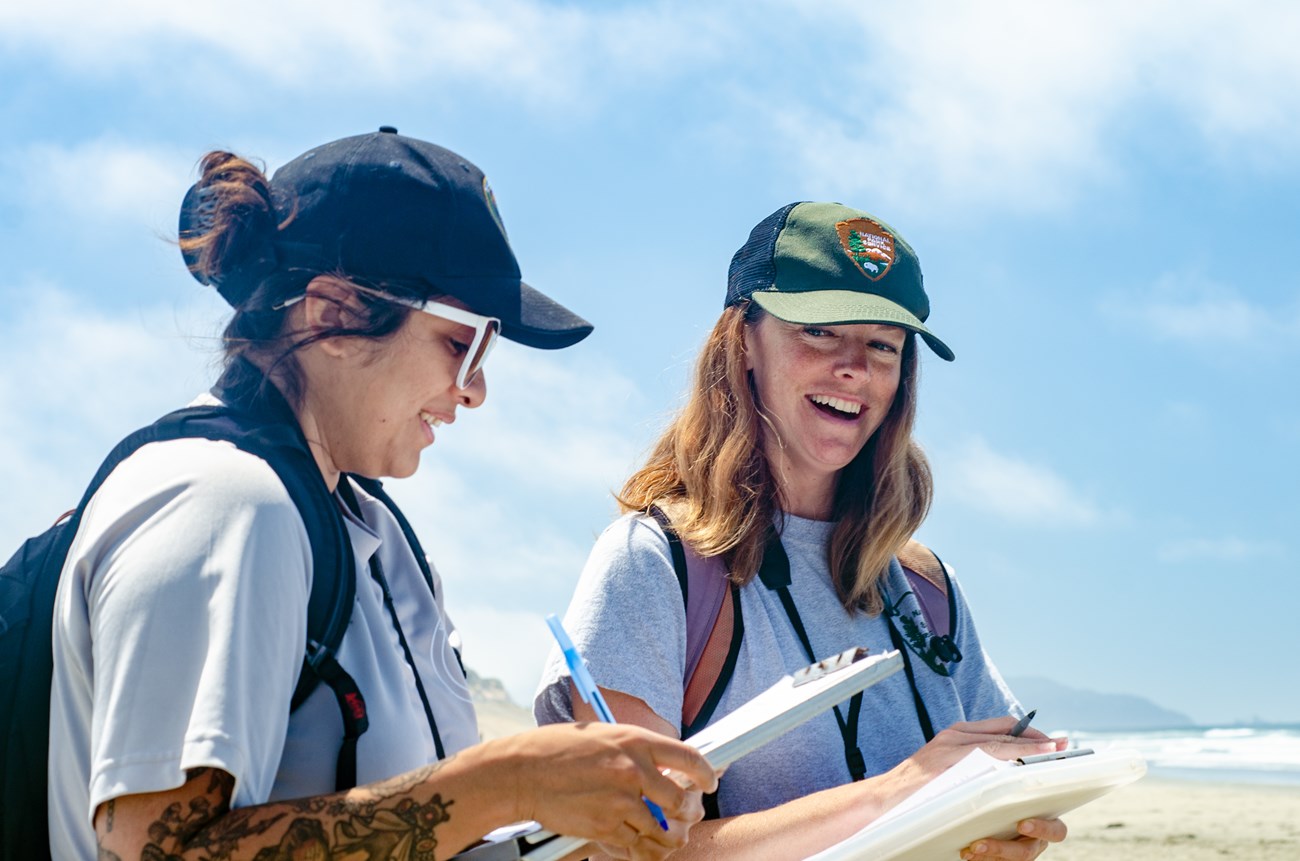
NPS / JAILYN HOSKINS
For snowy plovers what's great is we have this wealth of data. We have almost 30 years of monitoring now. That allows us to put more focus on management issues and what we can really do to protect the snowy plovers. One thing we're working on now is getting more and better signage out on Ocean Beach. There're so many people entering the beach from all different entrances. And so having clear messaging is really challenging. We're exploring different ideas like symbolic fencing for a small section of the beach that’s like ‘please don't walk here’. Because from monitoring for so long we can see the plovers mainly utilize this few-block section of the beach.“
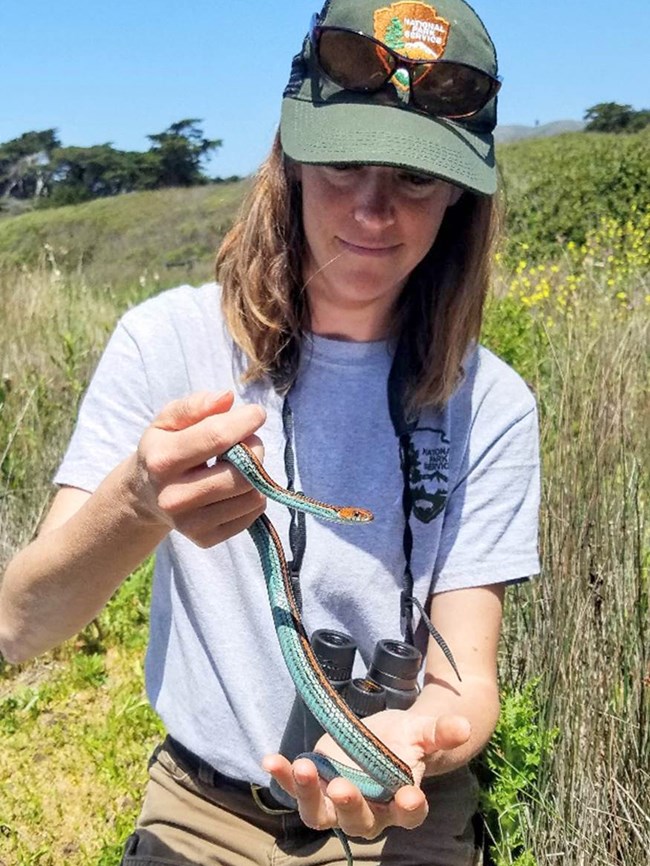
COURTESY RACHEL TOWNSEND
Exciting opportunities…
“I'm excited about the opportunity within my job to come up with ideas and proposals that could make a big difference and utilize new technologies. Like, I'm working on a proposal for a bank swallow project utilizing MOTUS [wildlife tracking] towers. Fort Funston is one of two coastal bank swallow populations in California, and we know that they migrate to South America after they breed. [We want] to get a clearer picture of their migratory routes, understand how the bank swallows are doing there and survivorship year to year - things like that.
I am also slowly working on finishing my M.S in Conservation Biology at San Francisco State! I’m trying to understand how a healthy community of carnivores, specifically the bobcat, coyote, and grey fox, are able to co-exist across park landscapes in Marin using a 3-year dataset from a 127-camera-trap grid within the Marin Wildlife Watch project. “
Learning from the next generation…
“Managing our wildlife intern program, I am surprised by how much I learn from each intern and the new perspectives they bring to the work. It's easy to get a little jaded when you are in this field for a while, and you don't see drastic improvements or changes that you'd like to see. And then to have these young people come in with this fresh perspective and enthusiasm—I'm continuously in awe of their dedication and passion for protecting the planet.”
Beyond work, hiking and family…
“I have three young kids right now so I am not pursuing a lot of hobbies! But I love hiking, and my friends are really important, so I'm always trying to connect with them and get outside and go hiking or camping. And my kids, once they're out there, they really love it. I want that to be part of their life and to encourage everyone to make getting out in nature a part of theirs too.
It's funny because I find myself trying to influence my kids and then I find them taking it to a whole new level. I was educating my 9-year-old about palm oil and the destruction of rainforest habitat and its effect on orangutans, and how they're critically endangered. I don't even remember how it came up. I showed him a little video and thought that was that. Well, now he reads the label of every single thing that we buy in the grocery store and makes sure that we do not buy anything with palm oil. He's given up Oreos and so many of his favorite candies.”
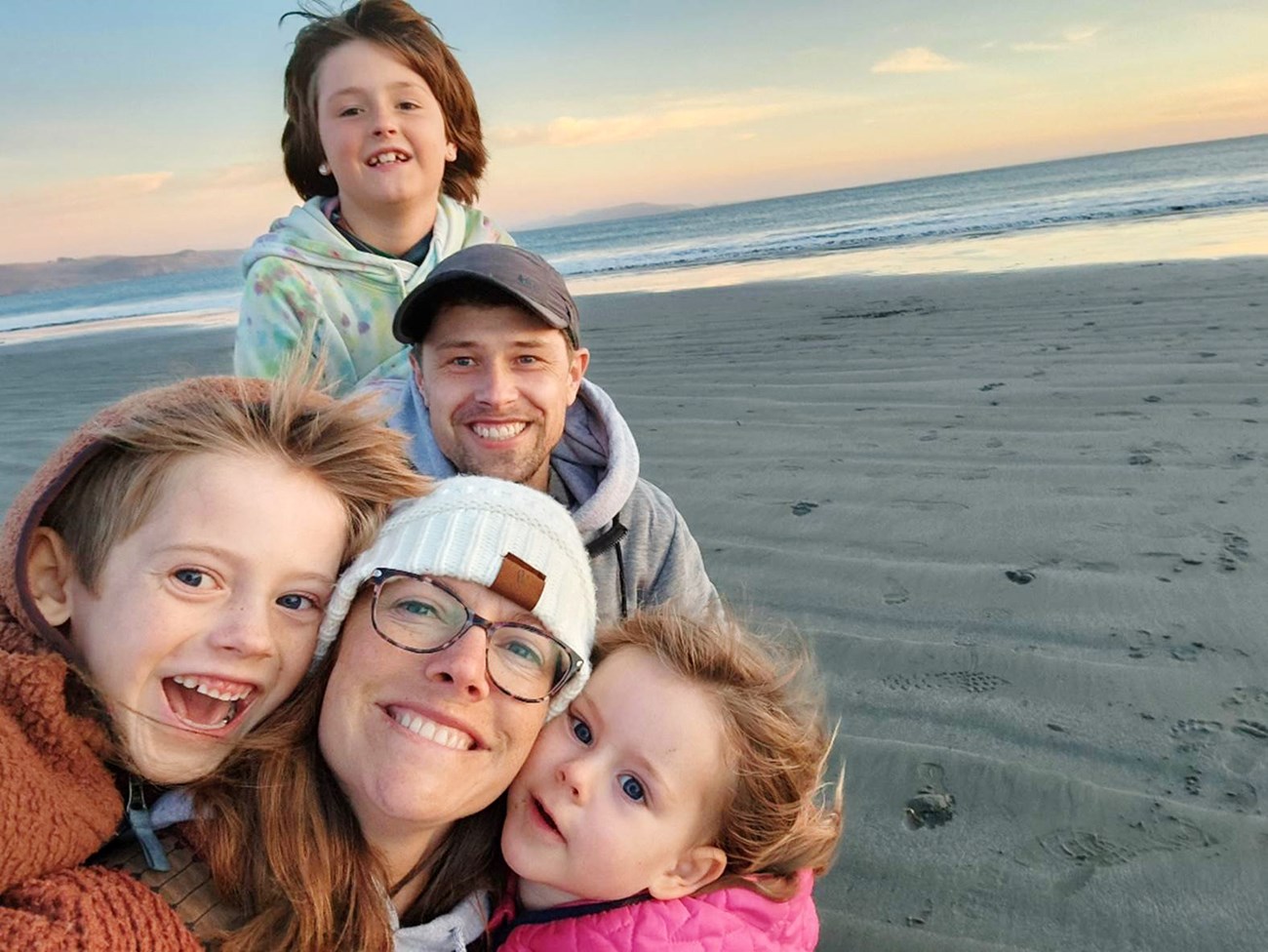
COURTESY RACHEL TOWNSEND
Breaking down barriers and boosting representation…
“Working [as a wildlife technician] in the Midwest, I was always getting joked about as this little girl driving a big truck and there were not as many women working with wildlife. So that was something to overcome or brush off. And just having to be flexible and piece jobs together and stick with it. There are barriers to natural resources and conservation [work] because you have to be able to get by in unsteady entry-level jobs, and sometimes it's hard to do financially. But within our park and our department we're really devoted to making this field welcoming and accessible to everyone. And I think [the National Park Service] is changing in that way. Our internships program has been revamped to give a living wage and housing. There's still a lot to do.
I've also been trying to get some of our Spanish-speaking rangers into the schools in their uniforms. I think it's important for kids to see rangers that represent them so they can see themselves in the National Park Service at some point. And you know, just reading all of these scientist profiles and seeing how many of us were inspired from childhood—it's like that's the pivotal moment when you need to be reaching people to influence them from the beginning to love and care for our planet. I remember begrudgingly going on some of those canoe trips being like, ‘Why do I have to do this?’, and now I'm like, ‘Oh, thanks, Dad, that really influenced my whole life.’”
Interview by Jessica Weinberg McClosky, August 2022.
Tags
- golden gate national recreation area
- muir woods national monument
- sfan
- san francisco bay area
- people
- meet the scientist
- scientist
- profile
- wildlife biologist
- wildlife biology
- nps careers
- women in science
- women in stem
- northern spotted owl
- western snowy plovers
- monitoring
- rachel townsend
- jessica weinberg mcclosky
